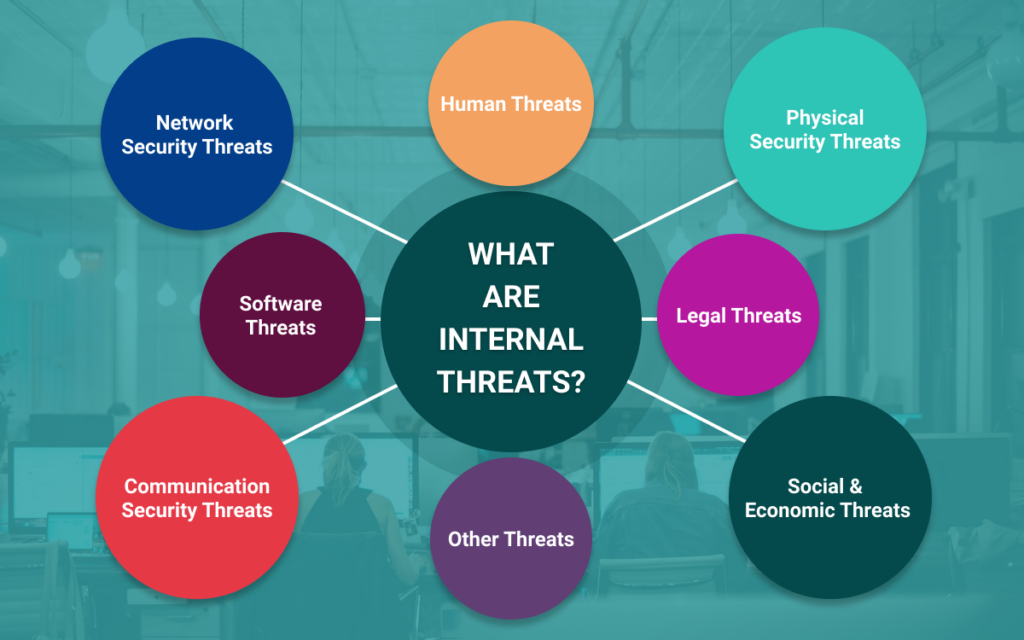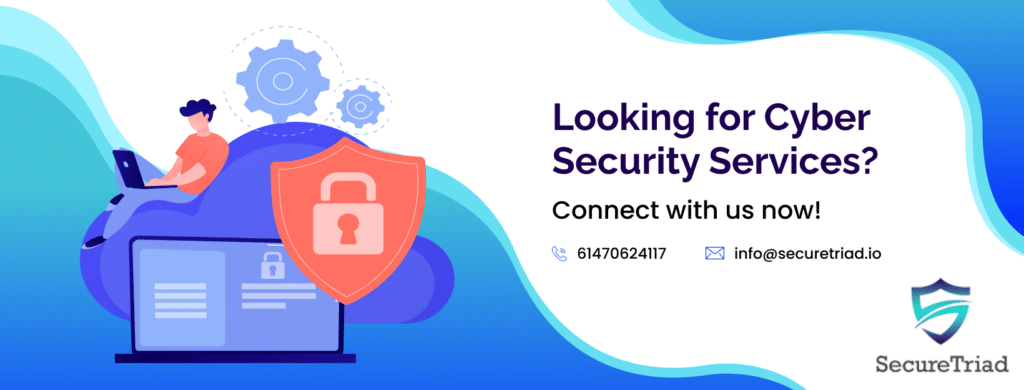
21 Jun Internal Vs External Threats- Here’s All You Need to Know
Today everyone is shifting from a traditional brick-and-mortar store to a full-fledged online business. This increasing number of online businesses has led to a dramatic increase in internet traffic. Consequently, a massive amount of data is generated every day that has created a breeding space for cybercriminals to which we call the “Golden Age”.
Cybersecurity threats are on the rise and nearly 68% of business leaders agree. Whether the attacks are motivated due to financial reasons or cyber espionage, they have created havoc.
Cybercriminals are targeting everyone like businesses, healthcare organizations, banks, financial institutions, and government organizations. The new wave of cyberattacks could be seen in government agencies and human rights group mostly in the US.
The freshest example of cyber attacks is the alleged Russian cyberattack that targeted 3000 email accounts of 150 different organizations. Out of these attacks, most were in the US.
It is said that the group that carried the attack was the same that carried the SolarWinds attack last year. And, Russia’s Foreign Intelligence Service (SVR) is accused of orchestrating the attack as a part of intelligence gathering according to the tech giant Microsoft.
The important question is what led to the attack? What were the risks and threats associated with the organizations?
Organizations need to understand the risks associated with their IT infrastructure and must have a holistic approach towards their management.
In this blog post, we will discuss the internal and external threats and how organizations can protect themselves.
So, let’s begin!
What are Internal Threats?

Internal threats relate to the cybersecurity risks that stem from the inside of any organization to exploit the system or to cause damage.
The biggest reason found so far is the abuse of extended privileges given to the trusted employees of the organizations. Moreover, if the organization is not vigilant about the practices then the employees can cause digital mayhem.
Check out for Internal Penetration Testing Service
How Internal Threats Occur and What are their Consequences?
As employees of any organization have the privilege of accessing physical equipment and documents, without appropriate security measures they can purposely cause damage.
There have been numerous cases like the Yahoo email leaks where the company was subject to the largest data breach on record. Also, employees who have left the organizations while leaving their accounts logged in to provide access to the server.
This way, they can maliciously obtain administrative privileges and can take hold of administrative functions. They may change the access rights of other employees or deactivate network security tools.
Other than this, accidental data loss and data breach are quite common. Around 95% of security breaches happen due to human errors. The common example we see is the people leaving their laptops accidentally in train and buses while travelling, or accidentally deleting data from a folder, or spilling a drink on devices.
Also, weak cybersecurity measures and unsafe practices are associated with cybersecurity risks. Supposedly, an organization’s servers are left unlocked in a room, there are high chances anybody could walk into the room and steal crucial information.
Even ordinary employees of the organization can also exploit the vulnerabilities accidentally by viewing anything on a malicious website. They may unintentionally download a virus and cause harm to the entire network.
What are External Threats?

An external threat relates to outsider attacks on the part of individuals attempting to gain unauthorized access to the network of the targeted organization.
The majority of external attacks are intended to steal crucial information through the use of viruses and malware. The important thing to note here is, the grave attacks come from skilled and sophisticated hackers which is quite worrisome.
Check out for External Penetration Testing Service
How External Threats Occur and What are their Consequences?
External attacks are harder to deal with than internal threats because you have no control over people outside your organization. Moreover, you cannot predict what’s going to happen.
To better understand the intensity of attacks, organizations need to know the entry points from where these attacks can take place.
If we look closely, we will discover that most attacks are intended to gather information, financial reasons, generate revenue, or modify existing programs through the means of malicious software- often called malware.
Some software is less harmful while some have the potential to destroy a network. The common examples include spyware, adware, ransomware, worms, Rootkits, and Trojans.
Another common way from where outsiders can launch an attack is through hacking. When it comes to the intent, there could be a wide range of motivation behind carrying out an attack. However, it completely depends on the type of party attacking the network, whether it is a company, individual, or government.
Sabotage is also another way from where an attack can be launched. It defines the activities that are deliberately carried out to disrupt service.
The common attacks that can take place include denial of service attacks, distributing malware, or physically destroying the equipment and systems. It can be carried out by companies or terrorist organizations with the clear goal of causing damage.
Also, a lack of knowledge regarding cyberattacks and unsafe practices can lead to cybercrimes. Social engineering is the biggest example where bank frauds and identity frauds happen.
People are easily tricked into revealing their private and crucial information. A phishing email is a common form where a bot or a person sends an email pretending to be in an authoritative position in any organization asking for confidential data.
Read Also: What is SQL Injection Attack?
Internal Threats Vs. External Threats- Which is Worse?
When we take a closer look at both internal and external threats, we realize that both are devastating for any organization. However, it depends on the industry and intention behind carrying out an attack.
Still, when it comes to internal attack and threats, you can be relieved because you have control over the internal factors. You can prevent any attack that could stem from the inside by following strict policies and security measures.
On the other hand, external threats are equally dangerous and are often a priority when data security is concerned. Most outsider attacks attempt to manipulate data and take advantage of a company’s structure, resources, employees, and information. Thus, organizations need to hardwire the network perimeters.
If you are already preventing an attack to be launched on your organization, hardly anything bad can happen.
Well, the primary concern is safety and organizations must take proper security measures. One shouldn’t make the mistake of blindly trusting the employees of the organization.
Instead, strictly monitor their activities and behaviour. Otherwise, it is risky to ignore anything cropping from within or outside the organization.
We would recommend you design the strictest policies and follow safe practices to prevent anything bad to happen in the organization. You can follow different ways to ensure proper security that we have discussed in the section below.
Let’s have a look at each one of them.
How to Protect Your Company?
When it comes to precautions and countermeasures, data protection is crucial. Here are a few ways you can ensure proper security from internal as well external threats.
Let’s have a look:
- Consider a risk-based approach by addressing each problem individually. This way, you will know the priorities and reach an informed decision that can be cost-effective and gives you the best results. Moreover, you would also know the information that is lucrative that you can protect by providing some extra layers of security.
- Go for changes in the job role and check if the enterprise systems are accessed with the passwords provided or changed by the employees. If you discover a change in the credential immediately take action and change all the login credentials.
- Make sure to restrict the sharing of passwords and other credentials through any means whether emails, messages, skype, or any communication channel as a part of cybersecurity measures.
- Don’t forget to remove ex-employees data access rights and eliminate any data access controls after keeping a backup file of the data.
- Consider automating everything by implementing automation programs that include filtering, detecting, and sending alerts based on keywords to check for any unusual activities. However, don’t completely rely on automation; instead, use a mix of both. Traditional methods that include background checks of employees and pre-employment screening are also important.
- We would recommend you conduct risk assessments, insider threat analysis, and ensure proper implementation of security management practices.
Also, we would suggest you take some crucial steps when it comes to the implementation of strategic cybersecurity measures:
- Always prioritize the business objective and categorize the risks
- Make sure you have a proactive security plan
- Consider having a response team for sudden attacks
- Educate employees of your organization and promote a security culture
Lastly, we recommend you consult cybersecurity professionals who can conduct risk assessments and ensure that no vulnerability stands overlooked. Secure Triad is a leading penetration testing company that offers thorough and insightful services.
Here you will get a certified and accommodating team of experts who brings in-depth knowledge to the table focused on remediating cyber threats.
If you are looking for someone who can rigorously test IT systems, ensure compliance with policy standards, and tackle IT security in every way, consider calling us at +61470624117.



